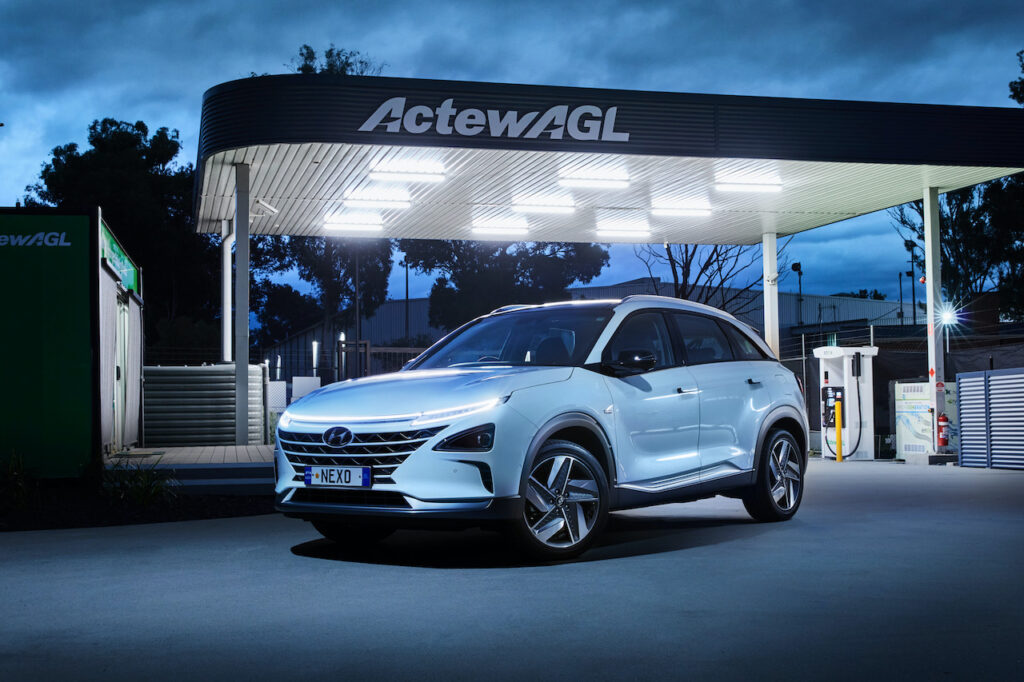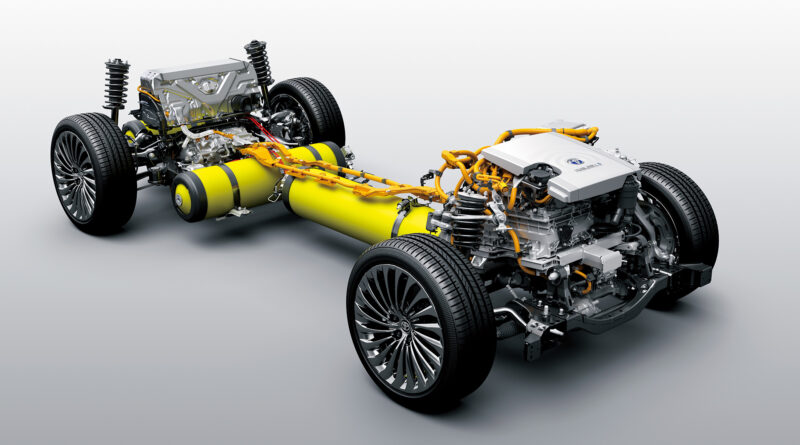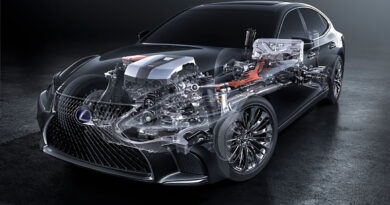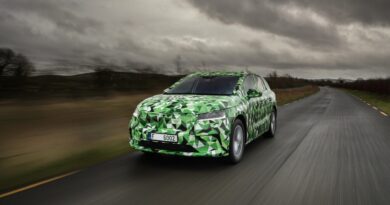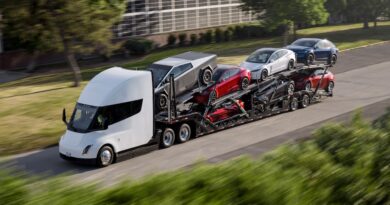FCEV: Fuel cell hydrogen electric vehicle
Hydrogen electric vehicles, often called hydrogen fuel cells vehicles (FCEV), drive the same as regular EVs. They can have one or more electric motors. However, instead of a large battery pack, they have a hydrogen tank that can be filled with the gas (or a liquid form of hydrogen) in the same time it takes to refuel an internal combustion vehicle. The hydrogen feeds a fuel cell, which creates electricity when the hydrogen reacts with oxygen in the air to create water vapour. That electricity can either be used immediately by the motor or stored in a small battery pack. The battery adds its oomph to the fuel cell’s output when maximum power is required. It also stores energy capturing by regenerative braking, boosting overall energy efficiency.
READ MORE: What is a hybrid vehicle (or HEV)?
READ MORE: What is a plug-in hybrid electric vehicle (PHEV)?
READ MORE: What is an EV or BEV?
Pros: Quick refuelling capability, zero CO2 emissions from the vehicle, performance, refinement
Cons: Very expensive and very rare, very few places to refuel them (yet)
Ideal for: Businesses, fleets and commercial drivers doing big daily distances and returning to a depot will be the first to benefit from FCEVs. In future they could also be beneficial for heavy duty EV uses, such as trucking, remote driving and towing. Toyota and Hyundai both believe hydrogen FCEV is well suited to Australia.
Examples: Toyota Mirai, Hyundai Nexo
